Who is the creature lurking in the library in Erik’s comic strip? I think I know, and I’ve entered Erik’s contest, but I can’t share my guess with anyone. But I will say this much — it’s a character from a book we know. After all, the strip is Hex Libris, in which Kirby, the main character is charged with taking care of a ginormous enchanted library.
Ever read a novel that just comes to life before your eyes? Well you can expect Hex Libris to take that theme and … ramp it up a little for you.
The serial web comic by designer-writer Erik Kuntz of Austin, Texas began as a New Year’s resolution. So did his illustrator’s blog A Dog a Day that features Erik’s unstop able canine imagery — with a doggy bite of daily commentary. But that’s a subject for the next post.
Erik was thinking of the classic Nancy Drew stories of the 1950’s, mulling how they contrasted and compared with the Nancy Drew graphic novels that are being designed for today’s teens.
“I wondered, ‘What if there was a place where characters could wander out of their books?’ ” Erik says. ”‘And what would happen if the real Nancy Drew ran into the punky Manga style Nancy Drew?’”
Our hero Kirby meets them both as a result of his new archival responsibilities. And so it is inevitable that the trio and who knows who else (stay tuned…) join forces to solve a mystery, or two.
The story unfolds in semi-weekly panels that move us easily, cleanly and sweetly through time and space. We care about Kirby and Amy (a girl who likes him) and girl detective Connie Carter ( the “original” Nancy Drew) and even the little old lady (or is she a witch?) who leases Kirby the uptown apartment that somehow, magically contains a Library of Congress-like basilica within its tiny walls.
It’s an idea Erik hatched at last year’s Summer Arts Workshop at California State University. He studied comics and animation in the summer program. One of the teachers, Trina Robbins (a comic book writer and illustrator since the 1960s) encouraged him.
“As much as I love comic books, it’s the comic pages in the Sunday paper that I most enjoy and try to emulate here — their sequential nature and the art style and sense of humor — especially from the 40s to the 50s, where they could work bigger and there was more possibility,” he says.
Kuntz blends his pop knowledge with early 20th century literacy, opening his ”chapters” with such verbiage as “In which our hero acquires new lodgings and meets a mysterious young woman ….”
“It tells you what will happen without giving it away,” he explains. ”With a serial web strip, just like in the Sunday funny papers, you kind of need to have a stop every day. You want each page of the comic to be a beat Each one has to be a sort of mini cliff hanger. And each chapter must have its own arc. That’s the other thing I work with to get right.”
Erik begins by writing a synopsis of what’s going to happen in the chapter, without the dialogue.
Then he begins to sketch and figure out the panels and individual frames,” he says.
“I scanned [pencil on paper] sketches for the early strips, but now I’m working directly on the computer, starting with rough sketches in Corel Painter using my Wacom Cintiq tablet monitor,” he says. “I stay with Painter through the inking process, then I bring the whole thing into Illustrator to do the lettering. Once in a while, when I’m out and about with my sketchbook, I capture a pose I want to use and scan that in and mix it in with my computer sketches.
“To be more precise, I use Painter’s Mechanical Pencil brush set to a light blue color. When I ink I use a variety of Painter’s Ink Pen brushes, mostly the Smooth Round Pen one. For the next one, I’m going to experiment with the tools that more closely imitate traditional comics inking brushes: it’ll be looser and I am not certain whether I’ll like it.
“I’ll know in a day or two when I get to the inking. “
Here’s Erik’s ‘pencil rough’ for the March 13 panel of ‘Hex Libris” — except he’s done it digitally.
“They look a lot like my traditional sketches look, since I use a col-erase blue to do my roughs on paper,” he says.
“I’m most of the way done with this roughing, I have some poses to adjust, some faces to finish and I’ve got to fix the perspective on the backgrounds, which are currently just scribbled in. Oh, and I need a background in the final panel. Painter has a perspective grid, which is useful for simple 2-point perspective, so I’ll be using that to get the kitchen sorted properly.
Erik has been a student of
I’ve done so much study over the last few years as to what makes a comic a comic as opposed to an illustrated story,” Erik says. ”It’s a constant struggle between what needs to be put in the picture and what needs to be said ‘out loud’ in words.”
For inspiration, Kuntz looks to the late “father of Manga” Osamu Tezuka (”Kimba the White Lion was my favorite show as a kid,” Kuntz says. “It was cartoony without being overly simple.”
He also draws from the late E.C. Seegar, the creator of Popeye and Thimble Theatre. “I like the older style of newspaper comics, where the adventure strips had a more realistic look.”
There are a huge number of ppl doing them now.
Early days, doing tremendously.
Most of them are very poor. You won’t get it if you weren’t out drinking the night before.
There are quite a few brilliant child-friendly comics.
Some people thew business model is web advertising, especially if you’re drawn to a certain one,.
Penny-Arcade.com..
If you don’t lnpw anything about video games you’;lbe mystified by the strip,
Advertising art.
Others are off advertising on their site, or sales of merchandize, T-shirts and print versions of ytheir work, and their artisitic expression and online portfolio.
I wouldn’t think that ppl doing the webcomics,
Aren’tmakiny money,
There is a stunning amount of good work out there, on the web, and a much
Web an ideal way for me to do a serial.
Web is an inexpensive way to put the work out there and much easier way to get it in front of somebody.
With the web and the social network everyone’s sharing things, pointg it tout toe each other, it’s a new milleu, an old art form anbut a different way of delivering it.
could do it free,
I think every artist that does children’s stuff, cartoony stuff.
Kids are more ., kids are reading comics on the web.
My web brouwser, opens all the comics I want to each in tabs. I don’t read them in the newspaper.
Traditional newspaper strips,
Calving and Hobbes being run again and again on the web. They syndicate.
Kidsa nolw reading Calvin and Hobbes on the web.,
Hald of them are newspaper strips and half are web only strips.
The interesting thing about comics is it could be a way to get ppl to your site,
Comic and the dog thing, anything they want to like and put elsewhere they can put ,
Imbedded my website address into the picture,
Then they canb
Its hard for everyone to say, content is not as sacred than it used to be.
url on the left, name and copyright infor






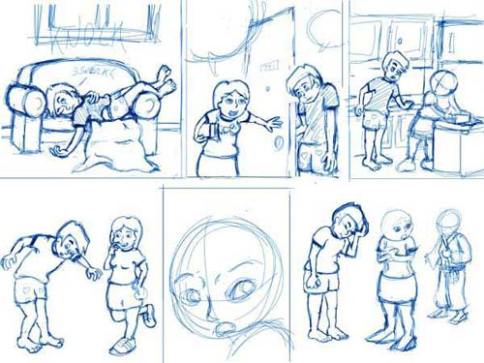


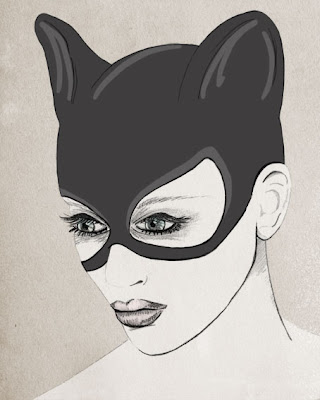
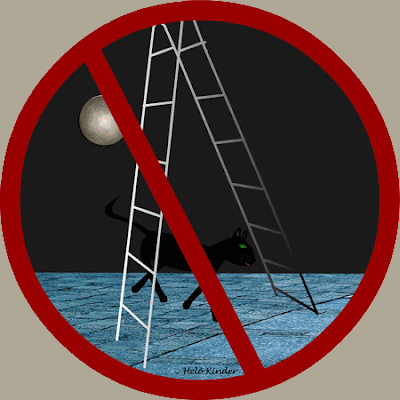
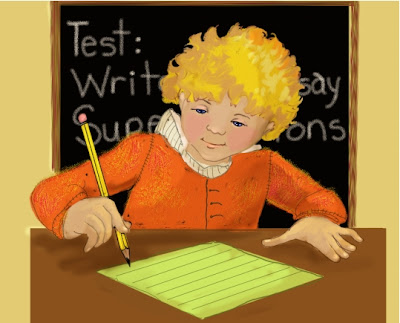
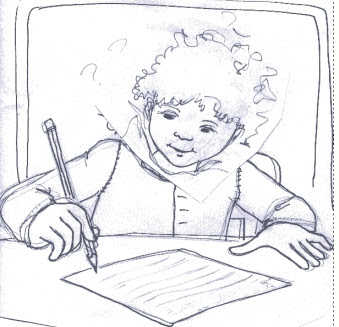
cute...love the witch
hehe, very funny!
haha, this cracked me up. Great illustration!
Very funny, especially with all the black cat illo.
I love the smug look on the white cat! :)
Michelle, you're a genius!!!!!
Very beuatiful illustration, I love the white cat ! :o)
Hehe. Such a great sense of humor. Great illo as always.
lol she has a white cat! and even so, I bet her powers are bigger!
Abrazos Mitchie :-*
Great pose on the witch character, terrific concept/take on the topic, and as always I love your character designs. 8 )
Lovely, Michelle! Great characters :)
Great twist!! Wicked fun Michelle.
Very nice work. Love your Blog.
Adorable and humorous twist on an old theme. You really have a great style!
Hi hi hi hi ! The white cat !!! I love it's expression !
Well done !
I love the eyes (of Newts?) in the cauldron!
Great piece, as always. I always love your illos!
hehe, great :) the cat's expression is priceless.
Great twist...I like all the little details...and since I saw yer cartoon network props...I hope you get to check out the live action Ben 10 coming on in about 6 minutes!!!
Hi Michelle - I just tagged you for "5 things about yourself". If you are interested see the rules on my blog. I hope you haven't been tagged already! Have fun!
Hi Michelle, I hope all's well!! I love your illo as usual, so adorable!!
Cute one!
haha very clever and funny!
hehe... cute lil' witch!
You've been tagged!! Tell me 5 things...if you want to play!
Lol Michelle! This is super cool! Love the witch!
Escelente y muy agradable trabajo :) Saludos
i think that white cat is a ghost kittie?
ascenderrisesabove.com/wordpress
Hi Michelle, I've tagged you for the 25 Top movies meme. :)